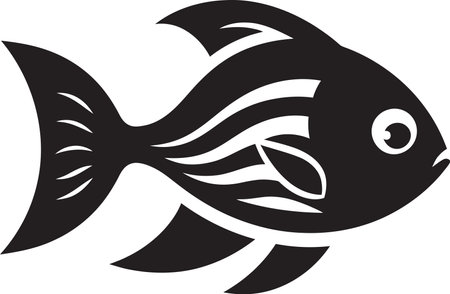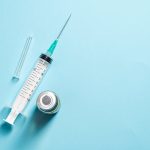Understanding Fish Diets: What Do Fish Normally Eat?
When it comes to feeding our pet fish, it’s easy to wonder if they can share the foods we enjoy. But before offering a snack from your kitchen, it’s important to understand what fish naturally eat and why their diet matters so much for their health and longevity.
Natural Diets of Common Pet Fish
Different types of pet fish have evolved to eat different things in the wild. Here’s a quick look at what some popular species usually eat:
| Fish Species | Natural Diet | Diet Type |
|---|---|---|
| Goldfish | Plants, small insects, crustaceans | Omnivore |
| Betta Fish | Insects, larvae, zooplankton | Carnivore |
| Tetras | Algae, small invertebrates | Omnivore |
| Cichlids | Varies (plants, insects, small fish) | Omnivore/Carnivore/Herbivore (depends on species) |
| Guppies | Algae, insect larvae, plant matter | Omnivore |
Why a Natural Diet Matters for Your Fish’s Health
A fish’s digestive system is designed for its natural food sources. When pet fish are fed foods that mimic their wild diets—such as quality flakes or pellets formulated for their species—they get the nutrients they need to:
- Grow properly and develop vibrant colors
- Maintain strong immune systems to fight off disease
- Live longer, healthier lives with fewer health problems
- Stay active and display natural behaviors in their tanks
The Risks of an Unnatural Diet
If fish are given foods that don’t match their needs—especially certain human foods—they might miss out on key nutrients or even become sick. For example, fatty or salty foods can harm their organs and cause long-term health issues.
The Bottom Line on Fish Diets (So Far)
Your fish’s natural diet is the best guide when deciding what’s safe for them to eat. Understanding these basics will help you make smart choices about treats and avoid foods that could do more harm than good.
2. Can Fish Eat Human Food?
Many fish owners wonder if their aquatic pets can share a bite of what we eat. While it might seem fun to offer your fish a piece of your lunch, it’s important to know that not all human foods are safe for fish. Different fish species have unique dietary needs, and feeding them the wrong foods can lead to health problems.
Understanding Your Fish’s Diet
Fish come in many varieties—some are carnivores, others are herbivores, and some are omnivores. What’s safe for one type of fish might be harmful to another. For example, goldfish and bettas have very different nutritional requirements. Before sharing any human food with your fish, consider their natural diet and what they would typically eat in the wild or as recommended by experts.
General Considerations When Feeding Human Food to Fish
- Species Differences: Always research your specific fish species before offering new foods.
- Digestive Health: Some human foods can upset a fish’s digestive system, leading to bloating or other issues.
- Additives and Seasonings: Many human foods contain salt, sugar, spices, or preservatives that are unsafe for fish.
- Portion Size: Fish have tiny stomachs—only offer small amounts if you decide to try human food.
- Water Quality: Uneaten food can quickly dirty the tank and harm water quality.
Common Human Foods: What’s Usually Safe vs. What to Avoid
| Food Type | Generally Safe For Fish? | Notes & Risks |
|---|---|---|
| Bread/Pasta | No | Difficult to digest; may cause bloating and water pollution. |
| Fruits (e.g., peeled peas, cucumber) | Yes (in moderation) | Avoid citrus; always cut into small pieces and remove seeds. |
| Cooked Vegetables (e.g., zucchini, spinach) | Yes (in moderation) | No seasonings or butter; steam or blanch first. |
| Dairy Products (cheese, milk) | No | Not suitable for fish digestion. |
| Meat (cooked chicken, beef) | Rarely/No | If used, must be unseasoned and offered very sparingly; not ideal for most species. |
| Cereals/Crackers/Chips | No | High in salt and additives; not safe for fish. |
| Certain Seafood (shrimp, plain fish) | Yes (for carnivorous species) | No seasonings; should be cooked and finely chopped. |
The bottom line is that while some simple foods like plain vegetables may be safe in small amounts for certain species, many common human foods are best avoided. Always do your research and consult with an aquarium expert or veterinarian if you’re unsure about feeding your fish something new.
![]()
3. Safe Human Foods for Fish
If you’ve ever wondered whether you can share some of your own food with your pet fish, the good news is that a few common household foods are safe and even beneficial for most aquarium fish. Here’s a handy guide to the safest human foods for fish, plus tips on how to prepare them.
Vegetables Your Fish Will Love
Many freshwater and tropical fish enjoy vegetables. They’re easy to digest and provide important nutrients. Here are some favorites:
| Food | How to Prepare | Benefits |
|---|---|---|
| Peas (Shelled) | Boil or steam, remove skin, mash lightly | Helps digestion and prevents constipation |
| Spinach | Blanch in hot water, chop into small pieces | Rich in vitamins and minerals |
| Cucumber | Slice thin, peel if possible, remove seeds | Hydrating and easy to eat |
| Zucchini | Slice, blanch or steam until soft | Low-calorie, good source of fiber |
Grains That Are Safe for Fish
A small amount of cooked grains can be given as an occasional treat.
| Food | How to Prepare | Notes |
|---|---|---|
| Rice (plain, white or brown) | Cook thoroughly, no seasoning or oils, cool before serving | Feed only sparingly; too much can cause water quality issues |
| Pasta (plain) | Boil until soft, rinse well, cut into tiny pieces | A rare treat, not a staple food |
Preparation Tips for Feeding Fish Human Food
- Always wash vegetables thoroughly to remove pesticides or chemicals.
- Avoid any seasonings, butter, oils, or sauces—plain is best!
- Cut food into tiny pieces so your fish can easily eat them.
- Remove uneaten food within a couple of hours to keep the tank clean.
- Introduce new foods slowly and watch how your fish react.
Foods to Feed Occasionally Only
Treats like rice and pasta should be offered rarely. These foods don’t provide all the nutrition your fish need but can add variety when used sparingly.
A Quick Reminder:
No matter how much your fish beg with those cute little faces, moderation is key! Overfeeding—even with healthy options—can lead to poor water quality and health problems for your aquatic friends.
4. Human Foods to Avoid Feeding Fish
While it might be tempting to share your favorite snacks or leftovers with your fish, some human foods can actually be harmful or even dangerous to their health. Fish have very different digestive systems compared to humans, so certain foods that are safe for us can cause serious problems for them. Here’s a quick guide to the types of human foods you should always avoid giving to your aquatic pets.
Processed Foods
Processed foods like chips, crackers, cookies, and lunch meats often contain preservatives, artificial flavors, colors, and additives that are not safe for fish. These ingredients can upset their digestive systems and pollute the tank water, leading to unhealthy living conditions.
Dairy Products
Fish cannot digest dairy products such as cheese, milk, or yogurt. Dairy can cause bloating and digestive issues in fish because they lack the enzymes needed to break down lactose.
Salty Snacks
Foods high in salt—like pretzels, salted nuts, or seasoned popcorn—can be extremely harmful to fish. Too much salt disrupts their natural electrolyte balance and can lead to dehydration or even death.
Seasoned or Fried Foods
Avoid feeding fish any foods that are seasoned (with garlic, onion, pepper, etc.) or fried. The oils and seasonings used in these foods are toxic to fish and can quickly contaminate aquarium water.
Quick Reference Table: Unsafe Human Foods for Fish
| Food Type | Examples | Why It’s Unsafe |
|---|---|---|
| Processed Foods | Chips, crackers, lunch meat | Additives & preservatives harm fish health |
| Dairy Products | Milk, cheese, yogurt | Fish cant digest lactose; causes bloating |
| Salty Snacks | Pretzels, salted nuts, popcorn | High salt disrupts fluid balance |
| Seasoned/Fried Foods | Fried chicken, seasoned fries | Toxic oils & spices; pollutes tank water |
Tip:
If you’re ever unsure whether a food is safe for your fish, it’s best to stick with options specifically made for them or consult a veterinarian experienced in aquatic pet care.
5. How to Safely Introduce Human Foods to Fish
If you’re curious about sharing some of your food with your pet fish, it’s important to do it safely! Not all human foods are suitable for fish, and even safe options need to be prepared and served correctly. Here’s a practical guide on how to introduce human foods to your fish while keeping them healthy and happy.
Guidelines for Trying New Foods
Start Small
Always start by offering tiny amounts—think about the size of your fish’s eye or smaller. This helps prevent overeating and makes it easier to spot any problems.
Proper Preparation Methods
Raw, seasoned, or oily foods can harm fish. Instead, try these methods:
| Food Type | Preparation Method |
|---|---|
| Vegetables (like peas, spinach, carrots) | Steam or boil until soft; remove skins and cut into small pieces |
| Fruits (like melon or apple) | Peeled, seedless, and chopped finely; offer only occasionally |
| Protein (like cooked eggs or plain shrimp) | Boil with no seasoning; cut into tiny bits |
Recommended Portion Sizes
Your fish should only eat as much as they can finish in 2-3 minutes. Overfeeding—even with healthy treats—can pollute the tank and harm your fish.
| Fish Size | Suggested Treat Portion |
|---|---|
| Tiny Fish (e.g., neon tetras) | A piece the size of a sesame seed |
| Medium Fish (e.g., goldfish) | A piece the size of a pea |
| Large Fish (e.g., cichlids) | A piece the size of a grape |
Monitor for Negative Reactions
After introducing new foods, watch your fish closely for the next 24 hours. Signs of trouble include:
- Lethargy or unusual hiding
- Lack of appetite for normal food
- Bloating or difficulty swimming
- Cloudy water (from uneaten food)
If you notice any of these signs, stop feeding that food immediately and return to their regular diet.
Pro Tip: Only offer human foods as an occasional treat—once or twice a week is plenty! Your fish’s main diet should always be a high-quality commercial fish food suited to their species.
6. Frequently Asked Questions about Fish and Human Food
Answers to Common Concerns from American Pet Owners
Many fish owners in the U.S. wonder if their aquatic pets can safely enjoy some of the foods we eat at home. Let’s tackle some of the most common questions and clear up a few myths, so you can keep your finned friends happy and healthy.
Can I Feed My Fish Leftovers from Dinner?
It’s best to avoid giving your fish table scraps or leftovers. Foods that are cooked, seasoned, or contain oils, butter, or sauces can be harmful to fish. Even small amounts of salt or spices might upset their digestive systems or pollute your aquarium water.
What Human Foods Are Actually Safe for Fish?
Some human foods can be given to fish as occasional treats, but always in moderation and prepared properly. Here’s a quick reference:
| Food Type | Safe for Fish? | Notes |
|---|---|---|
| Boiled Peas (shelled) | Yes | Great for digestion; remove skins first. |
| Lettuce/Spinach (blanched) | Yes | Offer in small amounts; rinse well. |
| Bread or Crackers | No | Too starchy; may cause health issues. |
| Cooked Meat | No | Not recommended; too fatty and hard to digest. |
| Fruits (banana, apple – small pieces) | Occasionally | Sugar content is high; use sparingly. |
| Dairy Products (cheese, milk) | No | Fish cannot digest dairy. |
If My Fish Accidentally Eats Unsafe Food, What Should I Do?
If you notice your fish has eaten something unsafe, don’t panic! Remove any uneaten food right away to prevent water contamination. Watch your fish for signs of distress like unusual swimming or lack of appetite. If symptoms appear, do a partial water change and contact a local aquatic vet for advice.
Is It True That Goldfish Can Eat Anything?
This is a myth! While goldfish seem eager to eat just about anything, their digestive systems are sensitive. Feeding them inappropriate foods can lead to bloating, swim bladder problems, or even life-threatening illnesses. Stick with species-appropriate diets as much as possible.
Why Is a Balanced Diet Important for Pet Fish?
A balanced diet ensures your fish get all the nutrients they need for growth, color development, and overall well-being. Relying solely on human food—even the safe options—can result in nutritional gaps. High-quality commercial fish food should always be the foundation of their diet.
7. When to Consult a Fish Veterinarian
If you’ve started offering your fish human foods, it’s important to know when to seek expert help. Even well-intentioned diet changes can sometimes lead to health issues for your aquatic friends. Here’s how you can spot trouble early and get the right support.
Common Signs Your Fish Needs a Vet
| Sign of Distress | What It Might Mean |
|---|---|
| Loss of appetite | Possible digestive upset from new foods or something more serious |
| Unusual swimming patterns | Potential internal discomfort or neurological problems |
| Visible bloating or swelling | Overfeeding, gas, or even organ issues caused by improper foods |
| Change in color or spots on skin/scales | Possible allergic reaction or infection triggered by certain foods |
| Lethargy (less active than usual) | General distress, which could be food-related or environmental |
| Gasping at the surface | Poor water quality possibly worsened by leftover human food; potential respiratory distress |
When Should You Call a Fish Vet?
- Your fish shows any of the symptoms above, especially after introducing new foods.
- You notice undigested food in the tank or your fish refusing food for more than 24 hours.
- There are sudden changes in behavior or appearance that don’t resolve quickly.
- You’re unsure if a particular human food is safe and want tailored advice.
- You see several fish affected at once—this could indicate a bigger issue with diet or water quality.
Finding an Aquatic Veterinarian in the U.S.
Not all vets treat fish, so look for an aquatic veterinarian near you. Resources like the American Association of Fish Veterinarians (fishvets.org) can help you find local experts. Bringing a sample of your fish’s food and water can also help your vet make a quicker diagnosis.
Your Role as a Fish Owner
The best way to keep your fish healthy is to monitor them closely, especially after changing their diet. When in doubt, reaching out to an expert is always the safest move for your underwater companions!


